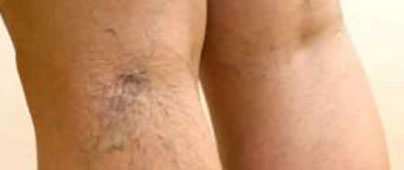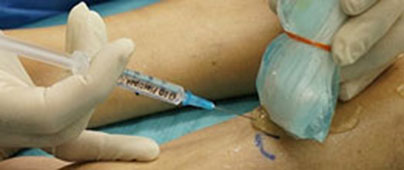What causes varicose veins?
High temperatures, obesity, pregnancy, physical inactivity and wearing very tight clothes are all drivers of varicose veins. The varicose disease is one of the ten most common surgical treatments and is in the `top 10´ of the most frequent interventions in the Western world.

Venous insufficiency is more prevalent in females due to hormonal changes that make women more prone to this disease. The high temperatures in summer are also an enemy for sufferers of this disease because they can induce vasodilation.
Likewise, exposure to UVA rays, saunas, steam rooms, Jacuzzi and hot baths are all aggravating factors, as well as sources of heat applied directly to the legs such as electric blankets or hot waxing.
However, in 90% of cases the occurrence of venous problems is due to a hereditary cause, in addition to the reasons previously indicated.
The symptoms and clinical manifestations are progressive and evolve, appearing in the early stages as sensations of pain, heaviness and tension in the legs, followed by cramps and swelling.
It is important to treat varicose veins?
The varices or dilated superficial veins of the lower limbs cause aesthetic problems and tired legs syndrome. In turn, if these are not treated, it can lead to venous diseases such as inflammation and thrombosis of the veins (thrombophlebitis) and venous ulcers at risk of varicorragia (bleeding). Restricted blood flow to the legs can be very painful, causing cramps and tingling in the legs after short periods of standing.
What is the treatment for varicose veins?
There are a number of different treatments available. The first thing we do is an ultrasound examination. Then, according to the size and/or location of the varicose veins, we can select the best technique.

If the veins are sizable, the best choice is classic surgery, which involves complete removal of the vein/s.
A new, minimally invasive technique involves lasering the veins with a fine catheter inserted through a tiny incision in the skin. The end of the catheter emits laser light (ENDOLASER) in the wall of the varicose vein, which destroys and seals the vein. It is minimally painful and within days the patient is performing normal activities.
If the veins are somewhat smaller, the best option is sclerotherapy, which involves injecting a drug that seals the vein walls. Generally it is a treatment that accompanies conventional surgery or laser catheter.
How are ‘spider veins’ treated and how much does it cost?
Small varicose veins, also called ‘spider veins’, can be treated with laser skin treatment and sclerotherapy. The combination of both techniques makes it much more effective than each one separately.
It is minimally painful and patients are treated on an outpatient basis, in sessions of 30-45 minutes depending on each case. After completion of the treatment an anti-inflammatory cream is applied, along with a leg bandage that must be worn for 24-48 hours. Patients are not prevented from walking or performing any other activities.
The number of sessions required depends on the amount of varicose or spider veins. All this is decided in the first consultation. The price of each session varies according to the number of total sessions, but between €300-400 euros per session.
How long is the recovery time following varicose vein surgery?
‘Venules’ varicose veins (ie, those that do not involve the saphenous veins) do not require stitches, so the procedure does not require admission to the clinic. The operation is usually performed with local anesthesia or light sedation.
After the operation, bandages can be removed after 24-48 hours and patients can return to a perfectly normal life. The only indications are avoiding sports for 10 days.
Patients can return to work after 3 to 4 days, or the following day if they work sitting down, in an office, for example.
During the healing process, areas of hardness and bruising may appear over a period of 2 weeks to 2 months, but they are not usually painful and disappear by themselves.
